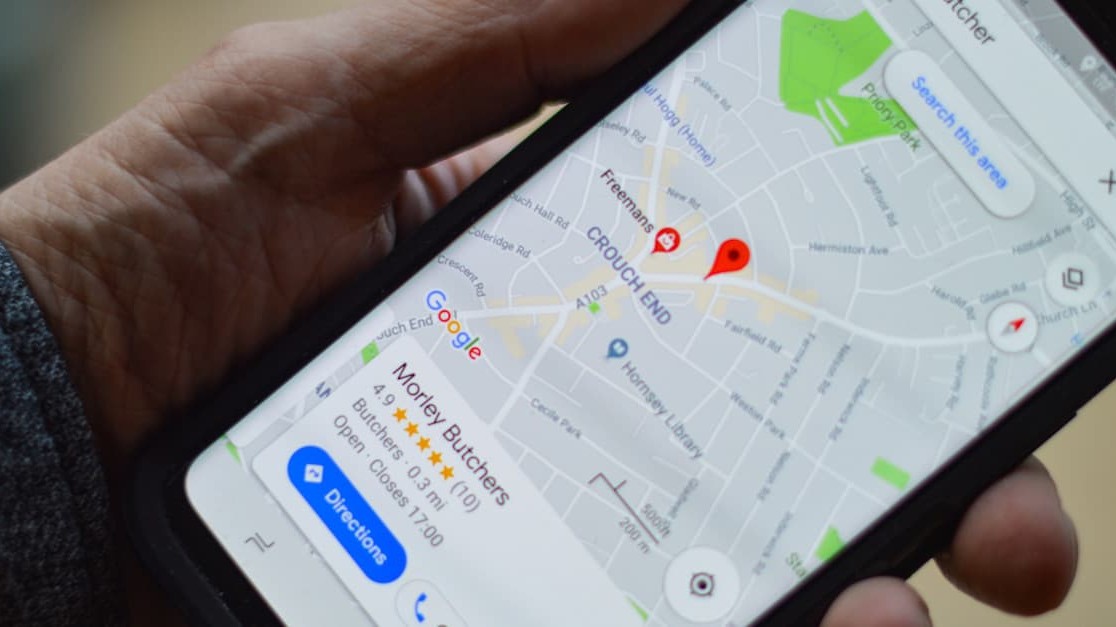Even if the geographical location of potential customers only plays a secondary role for your business, advertising on Google Maps can still make sense, for instance for events or trade shows. Read here how location-based advertising works.

Photo: Henry Perks/Unsplash
This is how location-based advertising on Google Maps works
Thanks to the triumph of smartphones, city maps have become a thing of the past. If you want to find your way around, you most likely turn to a mobile navigation service first, such as Google Maps. And if you use GPS data in this map to get directions, you are receptive to receiving information about all the interesting things there are to discover nearby.
Here is where enterprises which advertise on Google Maps to communicate with potential customers in the vicinity come into play. These search ads are blended in on the interested persons’ mobile devices in the form of a logo and the company name – and in best case, they lead these people to the shop or another location which was previously provided.
This is apparently worthwhile. As the Location-based Marketing Report 2019 from Factual shows, location-based advertising led to nearly 90 per cent more sales among those marketing specialists questioned, and 86 per cent to a larger customer base, as well as 84 per cent to stronger customer loyalty.
Location-based advertising: why it’s worthwhile for B2B too
Such location-based advertising pays off for the B2C segment above all, as the ads are targeted first and foremost towards conventional walk-in customers. This is hardly the case for the B2B area. Yet location-based advertising can still be helpful for advertising towards business customers:
- A completed directory listing with Google Maps helps to reinforce your website presence. After all, your enterprise is then shown more prominently in the search results. This listing service is still free of charge (as of December 2019), but Google may soon start launching fee-based extra functions.
- At trade show appearances, a listing on Google Maps helps to lead the audience to your own stand via the GPS function, if this location is advertised. Or to an after-show party which is taking place near the exhibition grounds.
- Even without being on site, advertising on Google Maps has its advantages: for instance, if a topic is being discussed at a conference or a congress which overlaps with the product or service of a B2B enterprise, visitors of this event can be shown content interesting to them in a targeted way via their smartphone. Via a specially developed landing page, the target group can receive additional information.
Location-based advertising on Google Maps: how to get started
Enterprises require a Google Ads account as well as a Google My Business listing in order to be able to advertise on Google Maps. To activate the broadcasting of an ad, the location must be defined for the targeting as well as the bids based on the location. High bids increase the visibility of the ad. For potential customers who are in the near vicinity of the selected location, and who prove to be particularly valuable through their search for a certain keyword, a high bid therefore makes sense. They will then most likely see an ad from the company.
What’s more, the keywords should be related to the location and to the local conditions. They should be in line with the terms which the target group of potential customers would most likely enter when searching for products and services.
